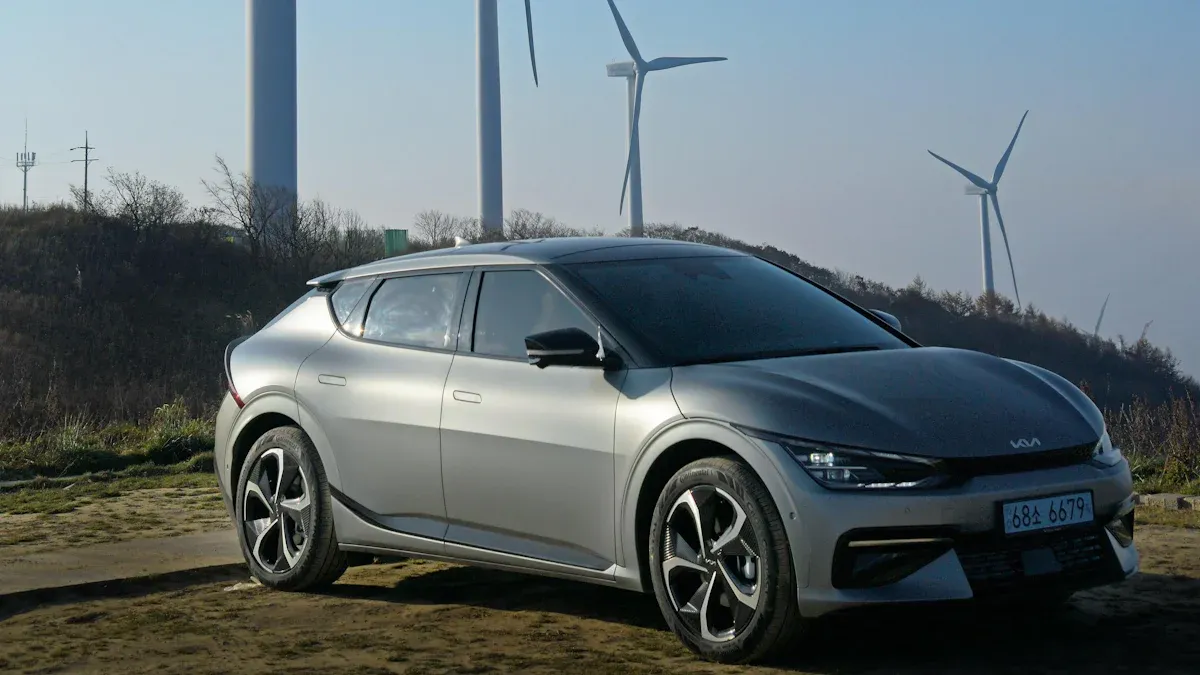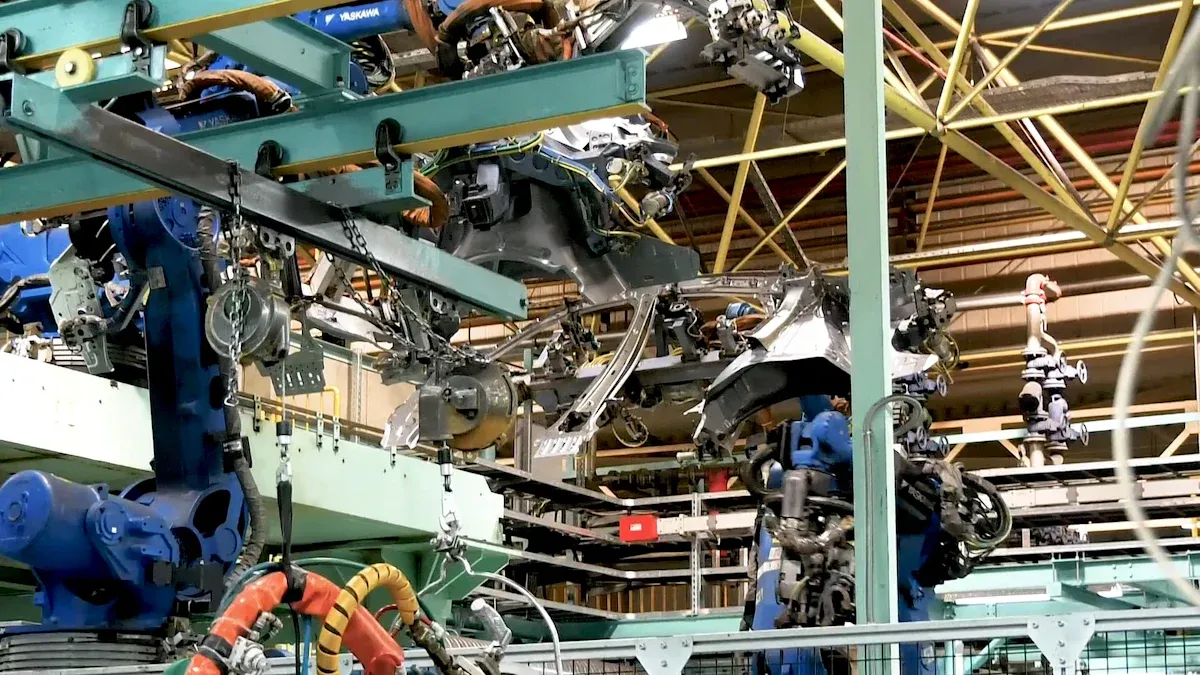
TAC Coating represents a technological leap in automotive engineering. You encounter it in components designed to endure high stress and extreme conditions. This advanced process, often applied as a CVD coating, enhances surfaces with exceptional strength and resistance. Its SiC coating properties improve performance, reduce wear, and boost fuel efficiency, transforming modern vehicles.
Key Takeaways
- TAC Coating adds a strong, thin layer to car parts. It makes them tougher and protects against damage, heat, and rust.
- This coating lowers friction in moving parts. Parts last longer and cars use less fuel, saving money and time.
- TAC Coating helps make cars lighter. Lighter cars use less gas and are better for the planet.
What is TAC Coating?
Definition and Unique Properties
TAC Coating, short for Thin Advanced Coating, is a cutting-edge surface treatment technology. It enhances the performance of automotive components by applying a thin, durable layer of material, often silicon carbide (SiC). This coating creates a protective barrier that resists wear, heat, and corrosion. You’ll find it particularly useful in environments where components face extreme stress or high temperatures.
One of its unique properties is its exceptional hardness. TAC Coating significantly reduces friction between moving parts, which minimizes wear and tear. It also boasts excellent thermal conductivity, allowing components to dissipate heat more efficiently. This combination of properties ensures that automotive parts last longer and perform better under demanding conditions.
Did you know? TAC Coating is so thin that it doesn’t add noticeable weight to components. This makes it ideal for lightweighting, a critical goal in modern automotive design.
How TAC Coating Works in Automotive Applications
TAC Coating works by forming a thin, uniform layer over the surface of a component. This layer acts as a shield, protecting the underlying material from damage. The coating process often involves chemical vapor deposition (CVD), where a gas reacts on the component’s surface to create the protective layer. This method ensures precision and consistency, even on complex shapes.
In automotive applications, TAC Coating improves the efficiency of engines and transmissions. For example, coated engine parts experience less friction, which reduces energy loss and improves fuel efficiency. In electric vehicles, TAC Coating helps manage heat in battery systems and electric motors, ensuring optimal performance. By enhancing durability and reducing maintenance needs, this technology plays a vital role in advancing automotive innovation.
Vorteile der TAC-Beschichtung in Automobilkomponenten

Enhanced Durability and Wear Resistance
Automotive components often face intense stress and friction during operation. Over time, this can lead to wear and tear, reducing their lifespan. TAC Coating addresses this challenge by creating a hard, protective layer on the surface of these parts. This layer minimizes friction between moving components, significantly reducing wear.
For example, when applied to engine parts like pistons or valves, TAC Coating ensures they maintain their integrity even under extreme conditions. This durability means fewer replacements and repairs, saving you time and money.
Tipp: By reducing wear, TAC Coating also helps maintain the performance of your vehicle over the long term.
Improved Thermal and Corrosion Resistance
Heat and corrosion are two major enemies of automotive components. High temperatures can weaken materials, while exposure to moisture or chemicals can cause rust and corrosion. TAC Coating offers a solution by providing excellent thermal conductivity and corrosion resistance.
The coating helps components dissipate heat more effectively, preventing overheating. This is especially important in engines and electric vehicle batteries, where temperature control is critical. Additionally, the protective barrier formed by TAC Coating shields parts from corrosive elements like salt, water, and chemicals.
Did you know? TAC Coating is particularly beneficial for vehicles operating in harsh environments, such as coastal areas or regions with extreme weather conditions.
Contributions to Lightweighting and Fuel Efficiency
Modern vehicles aim to be lighter and more fuel-efficient. TAC Coating plays a key role in achieving these goals. Its thin yet durable layer adds minimal weight to components, making it ideal for lightweighting efforts.
By reducing friction and improving thermal management, TAC Coating also enhances fuel efficiency. For instance, in internal combustion engines, less friction means less energy wasted, translating to better mileage. In electric vehicles, improved heat dissipation ensures batteries and motors operate more efficiently, extending their range.
Schlüsselinspektion: Lightweighting and fuel efficiency are not just about saving money. They also contribute to reducing the environmental impact of vehicles, making TAC Coating a sustainable choice.
Real-World Applications of TAC Coating

Engine Components
You rely on your vehicle’s engine to deliver power and performance. TAC Coating plays a crucial role in enhancing engine components like pistons, cylinders, and valves. These parts face constant friction and high temperatures during operation. The coating reduces wear by minimizing friction, ensuring these components last longer. It also helps dissipate heat efficiently, preventing overheating and maintaining optimal engine performance.
For example, coated pistons move more smoothly, reducing energy loss and improving fuel efficiency. This makes your engine not only more durable but also more efficient.
Transmission Systems
Your vehicle’s transmission system ensures smooth gear shifts and power delivery. TAC Coating improves the performance of gears, shafts, and bearings within the system. By reducing friction, the coating allows these parts to operate more smoothly. This results in less energy loss and better fuel economy.
The coating also protects transmission components from wear and corrosion. This is especially important in vehicles that operate in challenging conditions, such as off-road or high-performance cars. With TAC Coating, you can expect a more reliable and long-lasting transmission system.
Electric Vehicle Advancements
Electric vehicles (EVs) depend on efficient motors and batteries. TAC Coating enhances these critical components by improving heat management and durability. In electric motors, the coating reduces friction, ensuring smoother operation and less energy waste. For batteries, it helps dissipate heat, preventing overheating and extending their lifespan.
By improving efficiency and durability, TAC Coating contributes to the growing adoption of EVs. It ensures that these vehicles perform reliably while maintaining their environmental benefits.
TAC Coating has revolutionized automotive innovation by enhancing durability, efficiency, and performance. You’ve seen how it improves engine components, transmission systems, and electric vehicles. This transformative technology continues to shape the industry. As advancements progress, TAC Coating holds the potential to redefine automotive engineering, paving the way for more sustainable and efficient vehicles.
FAQ
What makes TAC Coating different from other coatings?
TAC Coating offers unmatched hardness, heat resistance, and durability. Its thin application ensures lightweighting without compromising performance, making it ideal for modern automotive needs.
Tipp: TAC Coating’s unique SiC properties set it apart from traditional coatings.
Can TAC Coating be applied to all automotive components?
No, TAC Coating works best on high-stress parts like engine components, gears, and electric motors. It’s tailored for areas requiring enhanced durability and thermal management.
How does TAC Coating contribute to sustainability?
TAC Coating reduces wear, extends component life, and improves fuel efficiency. These benefits lower waste and energy consumption, supporting eco-friendly automotive innovation.
Schlüsselinspektion: Longer-lasting parts mean fewer replacements, reducing environmental impact.


